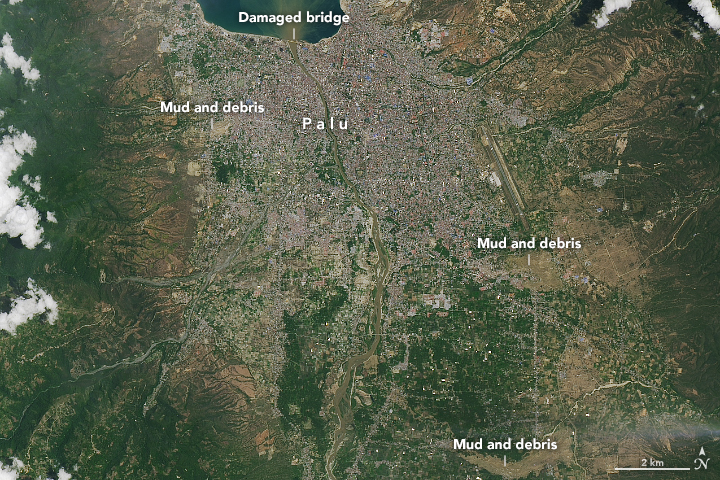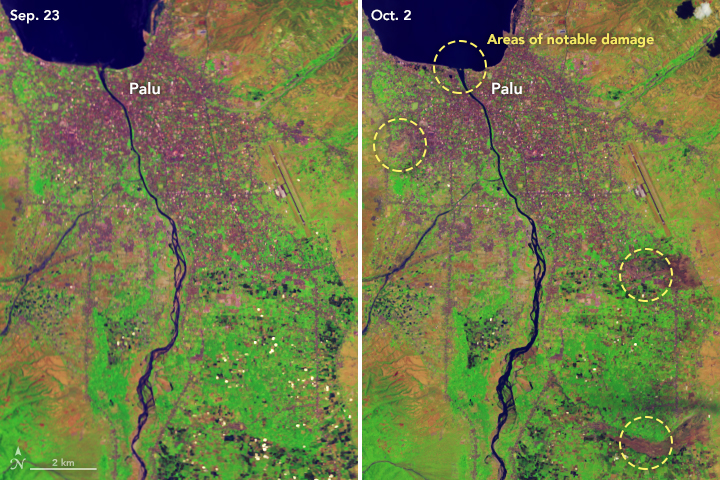Satellite Photos Help Indonesian Relief Workers Sort Through Earthquake, Tsunami Aftermath
Relief workers can now use freely available satellite imagery to navigate destruction from the recent earthquake and tsunami in Indonesia.
The Indonesian island of Sulawesi suffered devastation when a 7.5-magnitude earthquake struck the island's northern coast and produced a tsunami shortly after. The natural disaster hit the region on Friday (Sept. 28), and the death toll is reportedly over 1,350. The island's coastal city of Palu was hit the worst.
The tsunami and earthquake damaged homes, large civic structures and bridges, and the damage is so extensive that relief workers are finding it difficult to bring aid to survivors.
Satellite imagery company DigitalGlobe "will publicly release data of the affected areas to support disaster response as it [the data] becomes available," company representatives said in a statement yesterday (Oct. 2). This will be part of the company's Open Data Program, and data about the Indonesia earthquake and tsunami is available here.
The imagery available through this program is licensed under Creative Commons license, which means that it can "quickly be integrated into first-responder workflows with organizations like Team Rubicon, the Red Cross and other nonprofits," according to the statement.
Flows of mud and soil have wreaked havoc on the community in Palu. The flows' destruction is visible in DigitalGlobe's tweeted imagery. NASA's Earth Observatory also shared "sobering satellite views" of Palu on their website. According to NASA, scientists think the earthquake also triggered an underwater landslide that may then have caused the 3-meter-tall (10 feet) waves of the catastrophic tsunami.

This natural-color image of Palu released by the Earth Observatory came from the Operational Land Imager on the Landsat 8 satellite and was taken today (Oct. 2).
Get the Space.com Newsletter
Breaking space news, the latest updates on rocket launches, skywatching events and more!

This second image shows before and after views of the same region. "The false-color (bands 6-5-2) images above make it easier to distinguish between urban areas (purple-gray), vegetation (green), and mud and soil (brown and tan)," Earth Observatory officials said in the photo description.
Follow Doris Elin Salazar on Twitter @salazar_elin. Follow us @Spacedotcom, Facebook and Google+. Original article on Space.com.
Join our Space Forums to keep talking space on the latest missions, night sky and more! And if you have a news tip, correction or comment, let us know at: community@space.com.

Doris is a science journalist and Space.com contributor. She received a B.A. in Sociology and Communications at Fordham University in New York City. Her first work was published in collaboration with London Mining Network, where her love of science writing was born. Her passion for astronomy started as a kid when she helped her sister build a model solar system in the Bronx. She got her first shot at astronomy writing as a Space.com editorial intern and continues to write about all things cosmic for the website. Doris has also written about microscopic plant life for Scientific American’s website and about whale calls for their print magazine. She has also written about ancient humans for Inverse, with stories ranging from how to recreate Pompeii’s cuisine to how to map the Polynesian expansion through genomics. She currently shares her home with two rabbits. Follow her on twitter at @salazar_elin.









